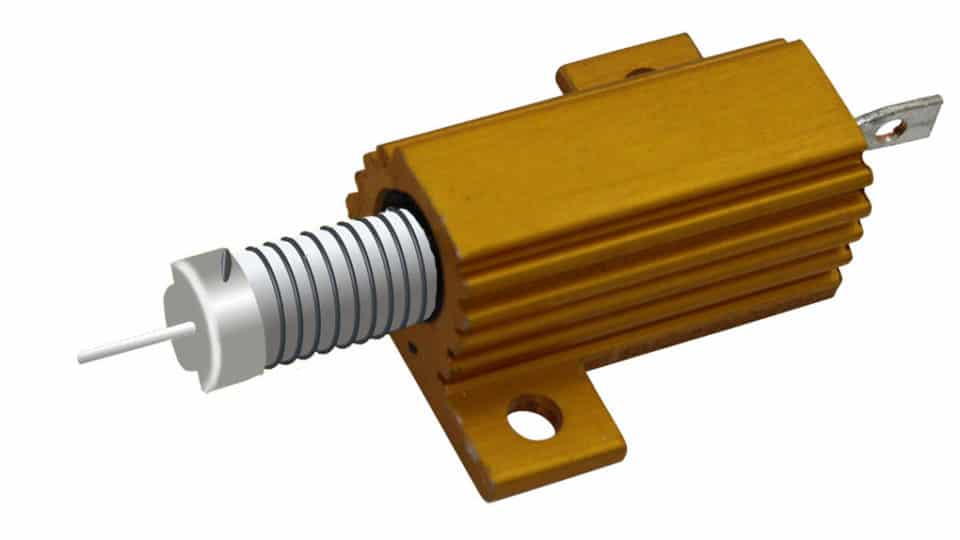Wirewound Resistors

Wirewound resistor is a type of passive component in which metal wires are used to reduce or restrict the flow of electric current to a certain level. It is of two types: power wirewound resistor and precision wirewound resistor.
Power wirewound resistor. This is a non-inductive wirewound resistor that operates at high temperature. It is commonly used for high power applications.
Precision wirewound resistor. This operates at low temperature with high accuracy. It is used as a precision resistor in instrumentation because of its high accuracy.
Available tolerances and temperature coefficients vary; devices designed for precision with sub-0.1% tolerance and temperature coefficients in the tens of PPM/°C are available, though the plurality of available devices at the time of writing are specified nearer to 1% tolerance and 200PPM/°C or less.
Wirewound resistors are used only for low frequencies, and are not suitable for high frequencies. At high frequencies, these act as inductors. Hence, for high frequencies, non-inductive wirewound resistors are used.
Wirewound resistors find use in almost all major electronic circuits, and are widely used in applications such as telecommunications, computers, audio and video equipment, medical electronic equipment, defence and space, telephone switching systems, transducers instrumentation, current and voltage balancing, and current sensing.
